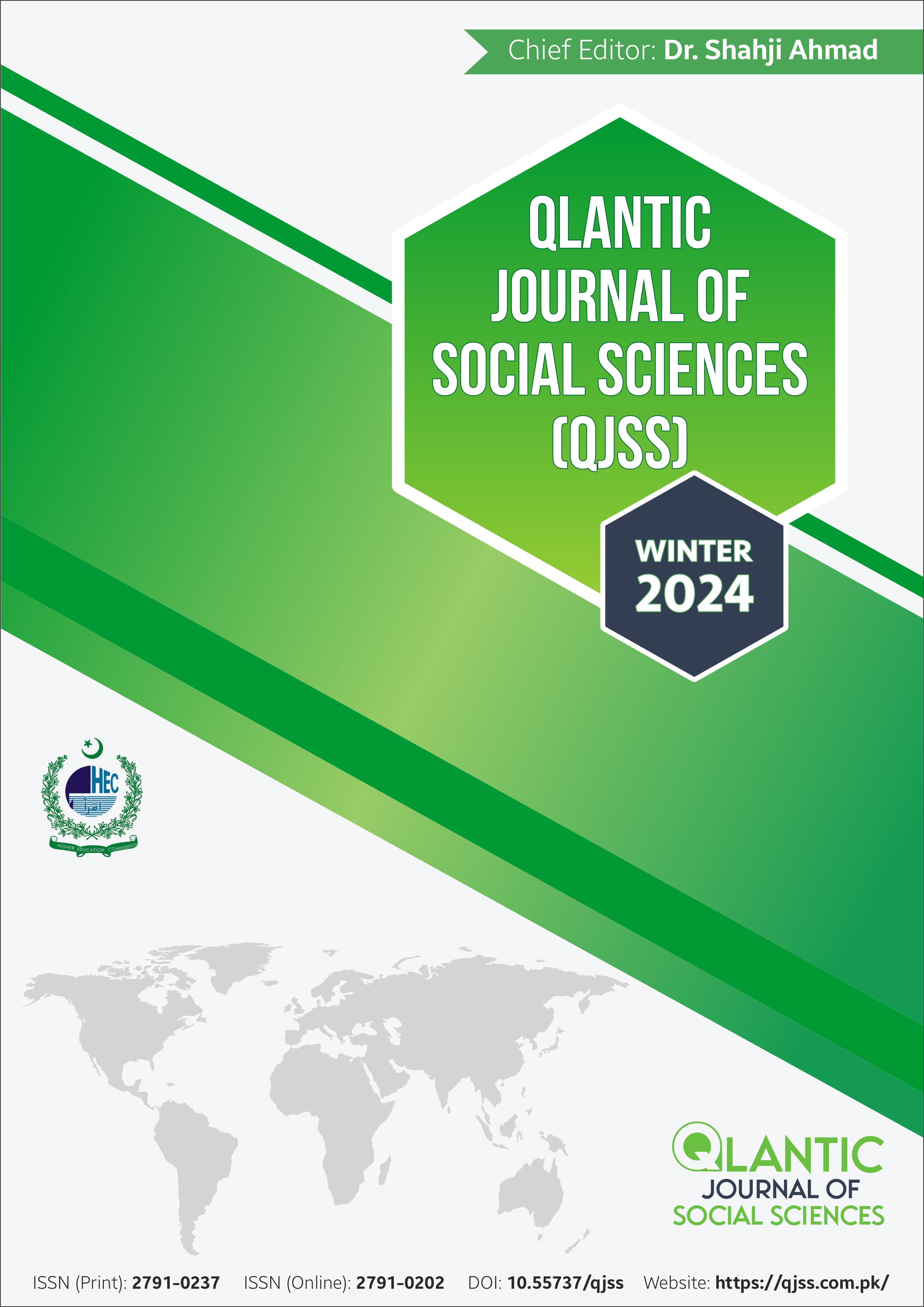Understanding the Climate Crisis: Risk Perceptions among Public High School Faculty
DOI:
https://doi.org/10.55737/qjss.699579326Keywords:
Climate Change Education, Teacher Perceptions, Risk Judgments,, Curriculum IntegrationAbstract
The purpose of the current study was to identify the hazards of climate change as perceived by public secondary school teachers. The research employs a quantitative research design. The sample consisted of 119 male and 80 female secondary school teachers through a random sampling technique. The self-developed questionnaire was used to identify the hazards of climate change as perceived by the teachers. The data were analyzed through Statistical Package for Social Sciences (SPSS) 26. Findings reveal that there was moderately high awareness of intensified disasters like heat waves and droughts. Moreover, 20-25% of the respondents underestimated the incremental risks like land degradation and biodiversity declines. Teachers connect recurring weather events to climate shifts, but current mental models downplay cascading losses. Tailored training to communicate compounding risks and mainstream threats in the secondary curriculum can help. Periodic risk perception surveys will enable evolving monitoring. Gender and age variance exploration may reveal differentiation. Pakistan’s vulnerability spotlights teachers’ risk interpretations needing systemic uplift to catalyse youth climate literacy. Targeted interventions addressing awareness gaps regarding indirect climate impacts are recommended alongside disaster preparedness communication.
References
Anderson, A. R., & Lent, M. D. (2019). Enterprising the rural; Creating a social value chain. Journal of Rural Studies, 70, 96-103. https://doi.org/10.1016/j.jrurstud.2017.08.020
Boon, H. (2016). Pre-service teachers and climate change: A stalemate? Australian Journal of Teacher Education, 41(4), 39-63. https://doi.org/10.14221/ajte.2016v41n4.3
Bradley, G. L., Babutsidze, Z., Chai, A., & Reser, J. P. (2020). The role of climate change risk perception, response efficacy, and psychological adaptation in pro-environmental behavior: A two nation study. Journal of Environmental Psychology, 68, 101410. https://doi.org/10.1016/j.jenvp.2020.101410
Lee, T. M., Markowitz, E. M., Howe, P. D., Ko, C., & Leiserowitz, A. A. (2015). Predictors of public climate change awareness and risk perception around the world. Nature Climate Change, 5(11), 1014-1020. https://doi.org/10.1038/nclimate2728
Levin, K., Boehm, S., & Carter, R. (2023). 6 Big findings from the IPCC 2022 report on climate impacts, adaptation and vulnerability.
Lombardi, D., & Sinatra, G. M. (2013). Emotions about teaching about human-induced climate change. International Journal of Science Education, 35(1), 167-191. https://doi.org/10.1080/09500693.2012.738372
Ma, S., Xu, J., & Fan, Y. (2022). Characteristics and key trends of global electric vehicle technology development: A multi-method patent analysis. Journal of Cleaner Production, 338, 130502. https://doi.org/10.1016/j.jclepro.2022.130502
Markowitz, E. M., Slovic, P., Västfjäll, D., & Hodges, S. D. (2013). Compassion fade and the challenge of environmental conservation. Judgment and Decision Making, 8(4), 397-406. https://doi.org/10.1017/s193029750000526x
Monroe, M. C., Plate, R. R., Oxarart, A., Bowers, A., & Chaves, W. A. (2017). Identifying effective climate change education strategies: A systematic review of the research. Environmental Education Research, 25(6), 791-812. https://doi.org/10.1080/13504622.2017.1360842
Nalau, J., & Verrall, B. (2021). Mapping the evolution and current trends in climate change adaptation science. Climate Risk Management, 32, 100290. https://doi.org/10.1016/j.crm.2021.100290
Ojala, M. (2012). How do children cope with global climate change? Coping strategies, engagement, and well-being. Journal of Environmental Psychology, 32(3), 225-233. https://doi.org/10.1016/j.jenvp.2012.02.004
Osunji, O. (2021). Relationship between consciousness about environmental education concepts in secondary school chemistry curriculum and attitude of students towards environment. Science Education International, 32(1), 80-84. https://doi.org/10.33828/sei.v32.i1.9
Stevenson, R. B., Nicholls, J., & Whitehouse, H. (2017). What is climate change education? Curriculum Perspectives, 37(1), 67-71. https://doi.org/10.1007/s41297-017-0015-9
UNESCO. (2003). United nations decade of education for sustainable development (2005-2014) framework for the international implementation scheme. Paris: UNESCO https://doi.org/10.4135/9781412974615.n110
Varela, B., Sesto, V., & García-Rodeja, I. (2018). An investigation of secondary students’ mental models of climate change and the greenhouse effect. Research in Science Education, 50(2), 599-624. https://doi.org/10.1007/s11165-018-9703-1
Yousafzai, M. I., Irshadullah, H. M., & Idris, M. (2024). The Role of Education in Fostering Political Empowerment among the Female School Teachers in Newly Merged Districts of Khyber Pakhtunkhwa. Qlantic Journal of Social Sciences, 5(1), 124-133. https://doi.org/10.55737/qjss.701167294
York, T. T., Gibson, C., & Rankin, S. (2019). Defining and measuring academic success. Practical Assessment, Research, and Evaluation, 20(5), 25-45. http://pareonline.net/getvn.asp?v=20&n=5




